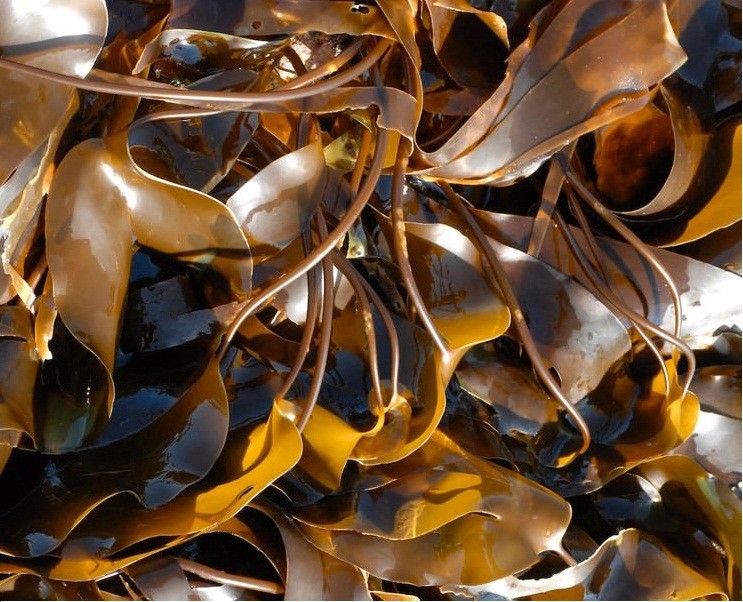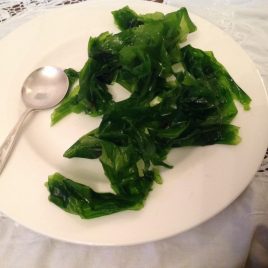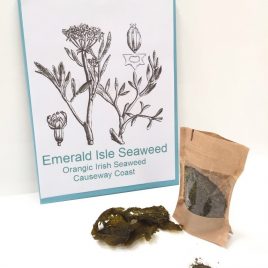Description
L. digitata is a tough, leathery, dark brown seaweed that grows to two or three metres. The holdfast which anchors it to the rock is conical and has a number of spreading root-like protrusions called rhizoids. The stipe or stalk is flexible and oval in cross section. The blade is large and shaped like the palm of a hand with a number of more or less regular finger-like segments. This seaweed can be distinguished from the rather similar Laminaria hyperborea by being darker in colour and having a shorter stipe that does not easily snap when bent.
Distrubtion.
L digitata occurs in the north west Atlantic from Greenland south to Cape Cod and in the north east Atlantic from northern Russia and Iceland south to France. It is common round the coasts of the Ireland.
L digitata is found mostly on exposed sites on shores in the lower littoral where it may form extensive meadows and can be the dominant algal species. It has a fairly high intrinsic growth rate compared to other algae, 5.5% per day, and a carrying capacity of about 40 kg wet weight per square meter. It may reach lengths of about 4 m. It overlaps to a small degree in distribution with Fucus serratus and Alaria esculenta. It is highly susceptible to grazing by sea urchins, among other species. It has low and high light limitation values of about 5 and 70 W per square meter respectively. Its distribution is also limited by salinity, wave exposure, temperature, desiccation and general stress. These and other attributes of the alga are summarized in the publications listed below
Cooking
Can be cooked as a sea vegetable.
Recommend using kelp in salads, smoothies, as a flavouring for fish and also in soups also use it to cook with rice and grains to add taste and into salads.
You can also use it in smoothies as a dried powder or add to fish at the end of cooking. It can also be used in miso soup.
‘You can take kelp as supplements, but you really want to be eating in its raw form to get the most nutritional benefits.
Uses.
L digitata or Kombu was traditionally used as a fertiliser and spread on the land. In the 18th century it was burnt to extract the potash it contained for use in the glass industry. In the 19th century it was used for the extraction of iodine. Both these uses died out when cheaper sources for these products became available. It is still used as an organic fertiliser but also for the extraction of alginic acid, the manufacture of toothpastes and cosmetics, and in the food industry for binding, thickening and moulding.[5] It is used in Japan and China for making dashi, a soup stock, and for other culinary purposes.[5] Historically, the dried stalks of L digitata, called sea-tangle tents were used as an abortifacient[6] and for inducing labour
Research:
Why we should all eat seaweed !
Please watch video on Ben Fuchs, a nutritional pharmacist from Boulder CO specializing in using nutritional supplements.






